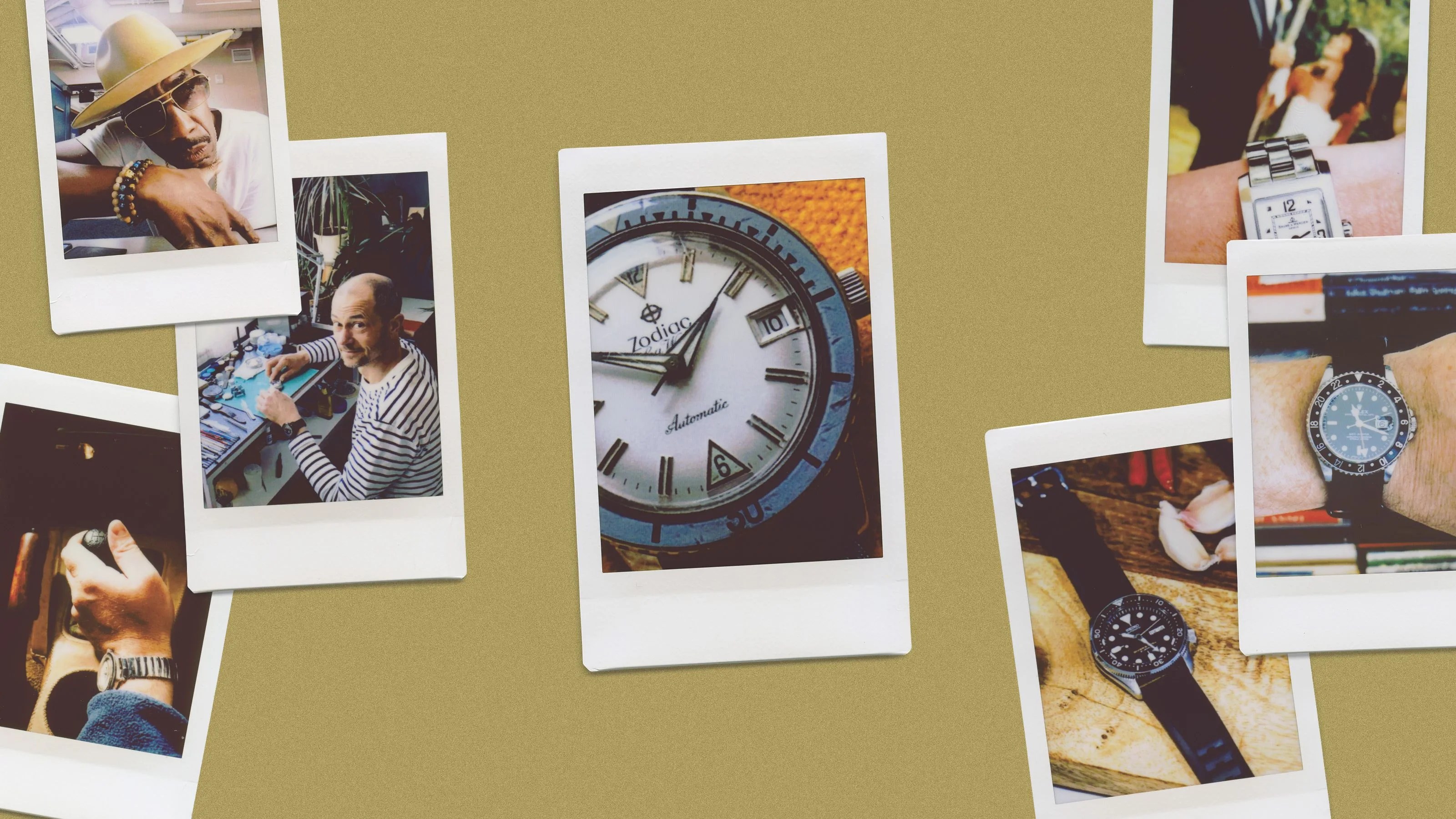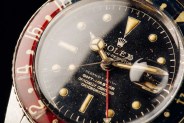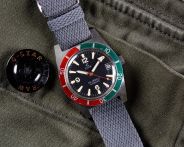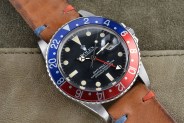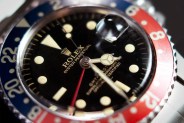As Curb Your Enthusiasm costar J. B. Smoove presciently notes, a watch is not only an accessory but something that defines you. Maybe it’s a totem, or a connection to a lost parent; an artifact from a happy past or a portent of a successful future; a philosophical argument; perhaps even a muse. We asked our favorite watch people which watches changed their lives.
We also asked each of our subjects to shoot their watch themselves, however they saw fit. The resulting photos are a nearly first-person look at beloved watches and the personalities behind them. Here are their first loves.
J.B. Smoove
Actor and Stand-Up Comedian
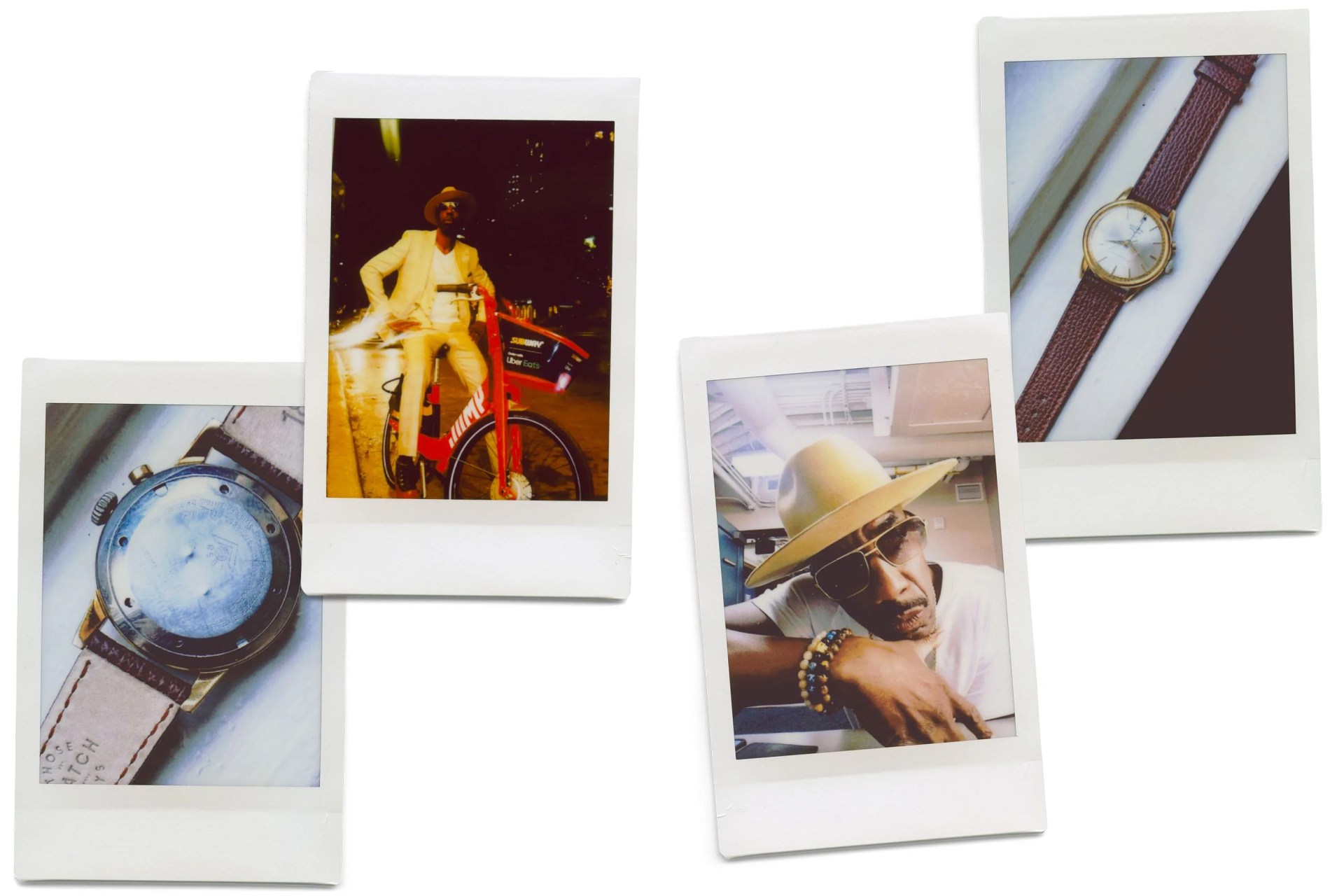 Photos by J.B. Smoove
Photos by J.B. SmooveThe Watch: Vulcain Cricket
“My dad gave me a watch before he passed, when I was about fifteen. He just said, “I had this watch a long time. This watch is for you now. Put it on your arm.” And it was all big and dangly. “Don’t worry,” he said, “you’ll grow into it.” It wouldn’t fit any good, but I didn’t want to change the band because my dad gave it to me. You know what I mean? Your wrist’s gotta grow into a watch when your dad gives it to you.
When he gave me the watch, I felt like, Wow, this is gonna be an amazing piece. But when you’re fifteen, you don’t respect the watch. I didn’t have class and style back then. I’d put the watch on once in a while, it’d be danglin’, spinnin’ around on my arm. I might even have played a game of basketball in that damn watch.
Your wrist’s gotta grow into a watch when your dad gives it to you.
I didn’t gain respect for that watch until I was damn near twenty-one years old. I pulled it back out again, shined it up. It wasn’t keeping time; I took it to the shop. The guy told me he couldn’t fix it, since it needed some overseas parts. [But] it’s one of those watches where I’m gonna wear it anyway. If I’m sitting at a restaurant with a friend, they look at my watch, and they see the hands ain’t movin’: “You know, the hands ain’t movin’!” Know what I tell ‘em? “It’s okay.” I pull up one of those cool terms people throw out all the time: “You know what time it is.” I don’t need the hands to move, because you know what time it is. I throw that metaphor out there. A stopped watch doesn’t move, but a stopped watch can be useful, when you’re throwing out cool-ass metaphors like you know what time it is.
Your wrist’s gotta grow into a watch when your dad gives it to you.
– J.B. Smoove
You’ll grow into it, though, is also a metaphor. Your style has to catch up to this watch. You’ll know when to put this watch on. It’s an accessory but it’s a piece that defines you. You gotta know when to wear that watch. You gotta know how to wear that watch. You gotta know when to even look at your watch. Sometimes, you got a watch on, but you’re in a situation where your ass ain’t got no business looking at that damn watch!
I gotta find someone who knows what the hell they’re doing. Maybe add a little diamond in there, something on one of the hands, maybe on both. But I think it would be really cool to see that watch with a little bit of upgrading done to it. I think it’d look beautiful.”
TODD SNYDER
Designer
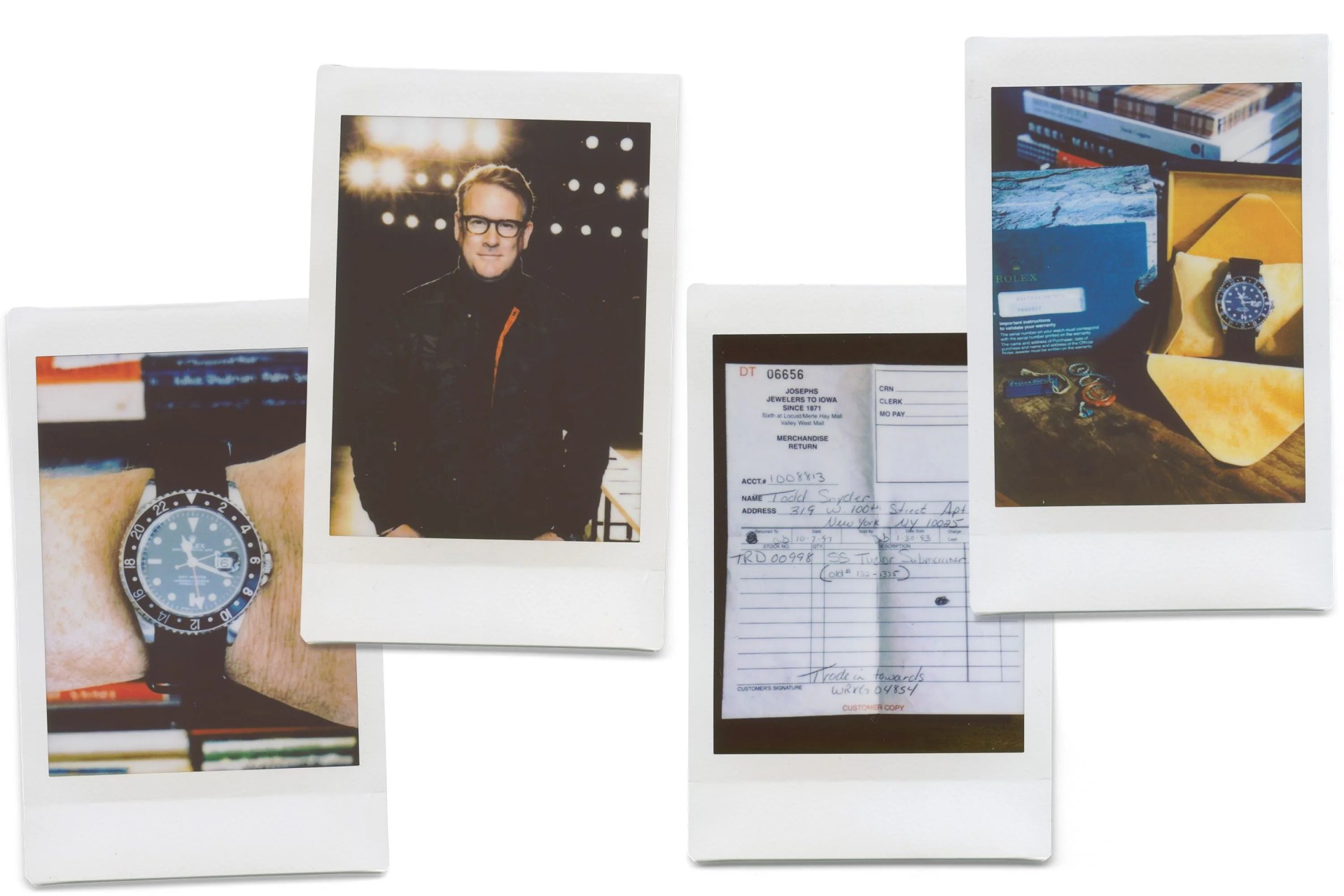 Photos by Todd Snyder
Photos by Todd SnyderThe Watch: Tudor Submariner (Since Traded)
“My first dive into a real watch — meaning, an investment — was a Tudor. It was in the eighties. I got a J.Crew catalog and on the cover was this really cool woman wearing a men’s watch. At the time, I was living in Iowa and I took the catalog into this watch retailer and asked about the watch. It was a Rolex Submariner. They said it cost around $2,500, $3,000 dollars.
I couldn’t afford that. They told me Tudor, the same company as Rolex, made a Submariner that cost $1,500. It had a very industrial look — utilitarian, stainless steel. I worked two jobs all summer — a tailor’s apprentice and on a construction crew — saved for it and bought that watch.
In the late nineties, I traded it in for a Rolex GMT. I was so naive. I’d heard it was a good investment. I went back to the same jeweler I’d bought it from, said I wanted a Rolex, and they gave me $2,000 for the Tudor. I still have the papers for the purchase of the Rolex GMT and the trade-in of the Tudor. I still look at it, and think, what an idiot. But you know, live and learn. I still have the GMT, so I guess I learned something.”
Wes Kwok & Cullen Chen
Cofounders, Nodus watches
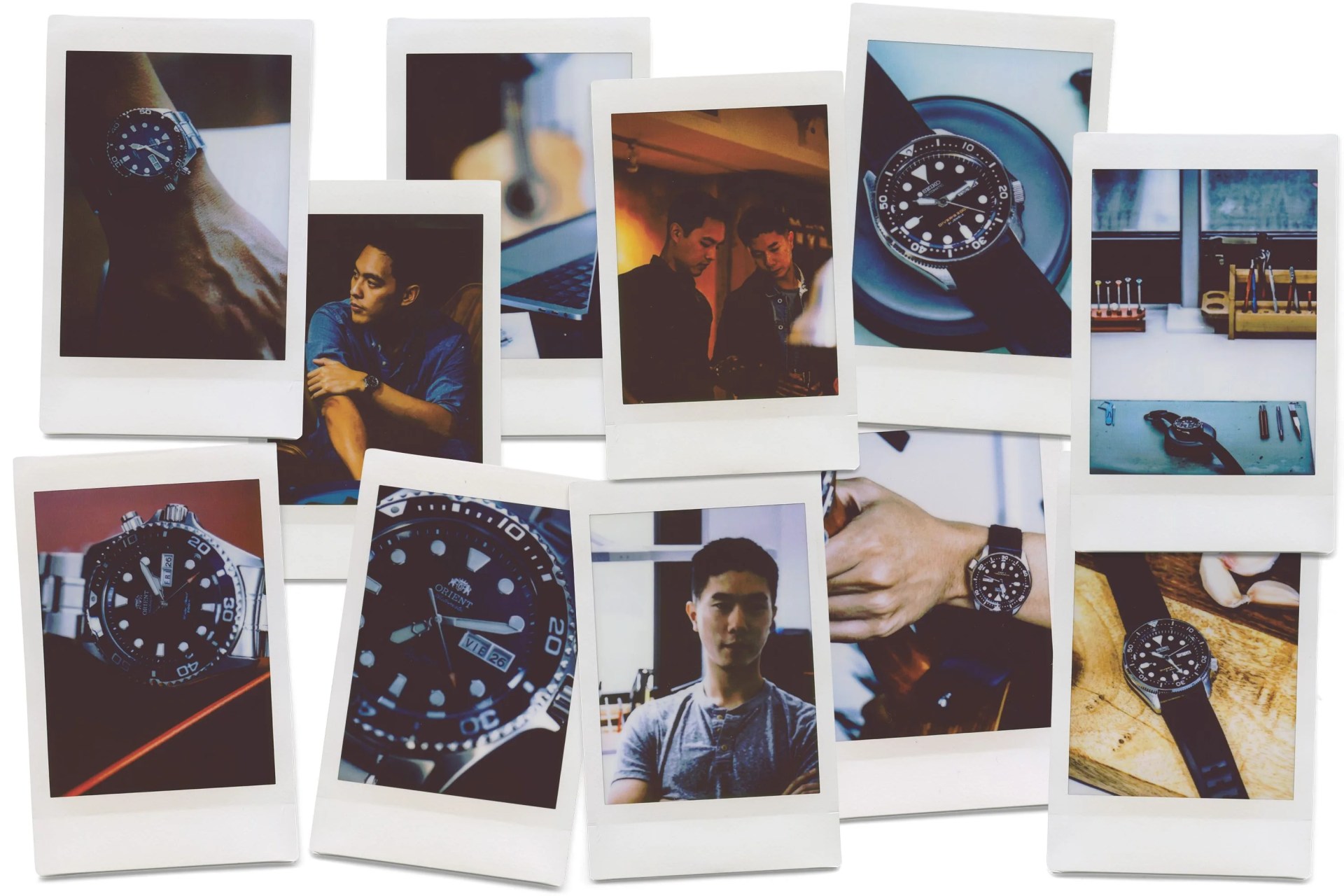 Photos by Wes Kwok & Cullen Chen
Photos by Wes Kwok & Cullen ChenThe Watches: Seiko SKX and Orient Ray
Wes Kwok: “We’d been close friends since high school. [In college] we were sending photos back and forth of watches we both liked. At the time, we didn’t have much money. We had to save up and buy one watch at a time. I remember Cullen talking to me about the SKX as a common starting point for budding collectors. I was looking at the sibling watch to the SKX, the Orient Ray.
Cullen came to visit me in Boston. That was the first time we’d seen each other since high school. I’d gotten him an SKX, as a gift. He pulled this Ray out of his bag and gave it to me.”
Cullen Chen: “These were our first dive watches. Ever since then, we’ve always loved dive watches, always worn them. That’s what solidified the beginning of Nodus, even though Nodus was still three years from happening.”
Wes Kwok: “After we gave each other the watches, I think I remember us having a pretty good night. Got a couple guitars out, a couple beers, got back to what we always used to do.”
ERIC WIND
Founder, Wind Vintage
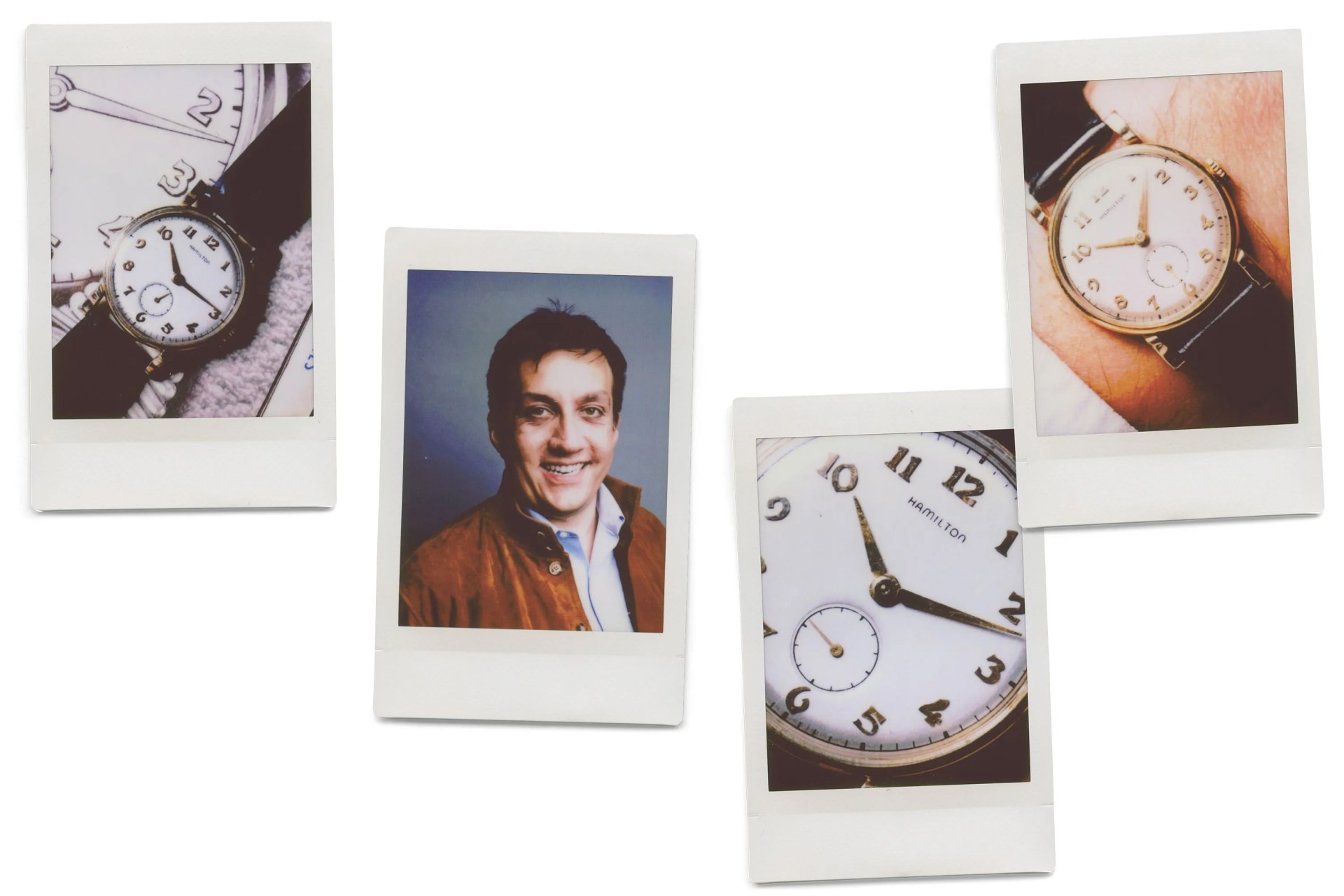 Photos by Eric Wind
Photos by Eric WindThe Watch: Hamilton Neil
“My first mechanical watch was this Hamilton, which was originally a gift from grandmother to my grandfather in 1947 for their wedding. My grandfather was of Swedish-American background, with an immigrant Midwestern mentality. He served in the navy in World War II, in the Pacific Theater. He contracted malaria over there, and was forever hot the rest of his life. He’d always want the windows open. It’d be winter out and he’d be boiling.
It’s a Hamilton gold-filled watch made in Lancaster, Pennsylvania. At that time, Hamilton gave all its watches male names rather than reference numbers, and this one is the Neil. My grandmother was a schoolteacher, and it was a significant purchase for her. My grandfather wore it his whole life.
After he passed in 2008, my mom picked it up, got it serviced and gave it to me. I was fascinated — you could pull apart the watch and look at the movement. I’d open it up, remove the dial and look at the movement running. I came across Hodinkeewhen looking up vintage watches online that summer. By 2010, I was writing for them, and then I started my business. This watch is very much the reason I do what I do.”
Lewis Heath
Founder, AnOrdain
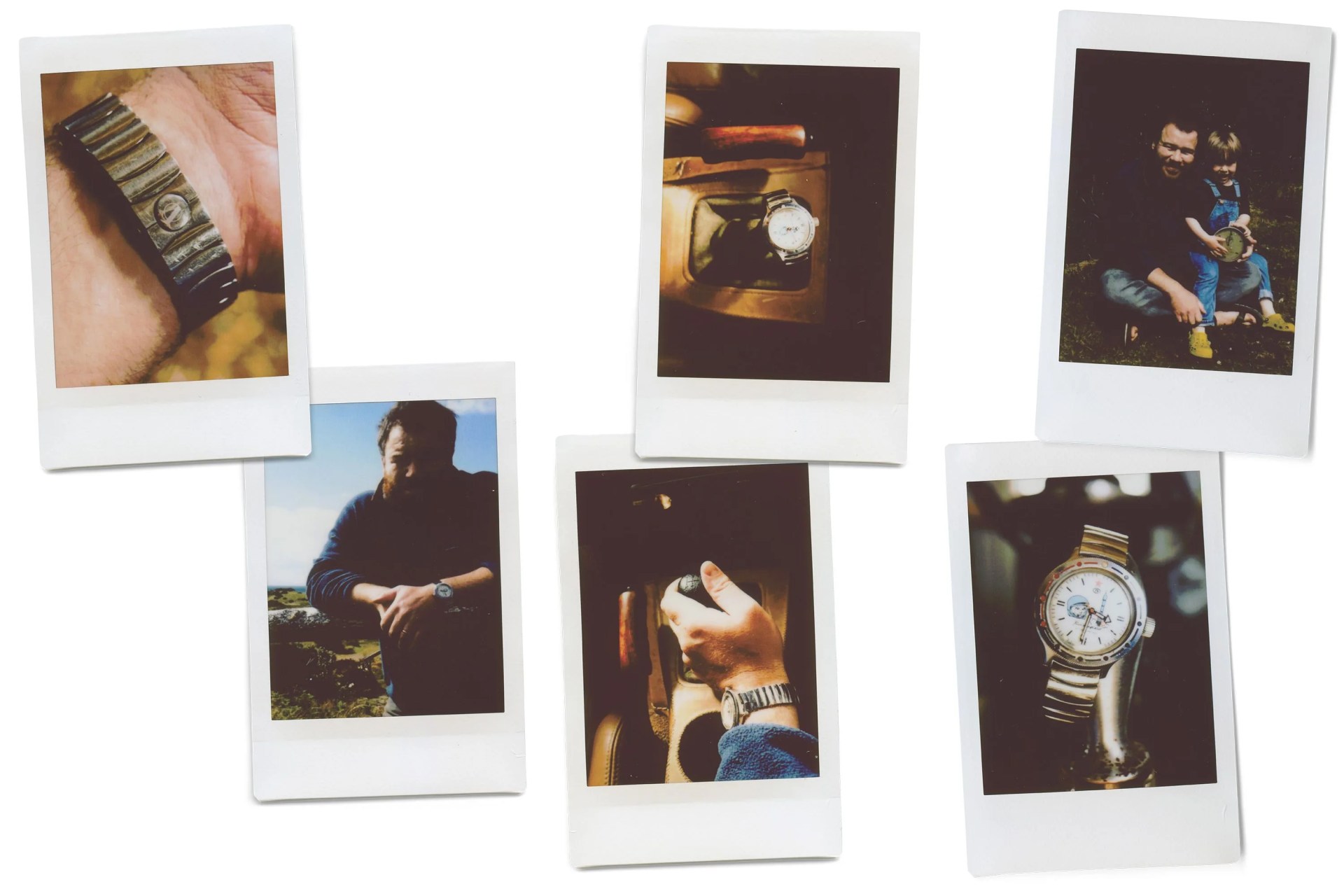 Photos by Lewis Heath
Photos by Lewis HeathThe Watch: Russian Space Watch
“I got it in a flea market in East Berlin fifteen, sixteen years ago. When I first went to Berlin, it was not like anywhere else. As you know, the eastern part of Berlin was run by the Russians ‘til the Wall came down. Nine or ten years after that, still, there were still bullet holes and bomb damage everywhere. They’d never really fixed it up after the war.
The Wall came down, land was cheap in the East, and all the artists moved in. Normally, money rules things. You have to pay the rent, so you get a job. You end up spending time working, not doing anything interesting as an artist. In East Berlin, there were people squatting in old buildings, putting up art galleries. There were bars where a beer cost what you wanted it to cost. For a nineteen-year-old art student, it was an amazing place to live. I fell in love with the place very quickly.
I have no idea what the actual model of the watch is; I just know it’s commemorating a space event.
You just imagine someone being given it in the sixties, living in a completely different world than what you know. That’s what I love about vintage watches — you’ll never know all of their stories.
– Lewis Heath
The watch was in a flea market, mixed in with stuff people had had in their houses. The communist Russians had all sorts of propaganda stuff. I have no idea what the actual model of the watch is; I just know it’s commemorating a space event. You just imagine someone being given it in the sixties, living in a completely different world than what you know. That’s what I love about vintage watches — you’ll never know all of their stories.
It’s a very quirky little thing. It’s got an astronaut’s face on it. A novelty. With AnOrdain, I wouldn’t be allowed to put pictures of astronauts on a watch. But we have a version of the Model 2 Field Watch that’s pink with a sparkly purple dial. My love of that quirky Russian moon watch, it’s kind of come through.”
Steve Kivel
President, Grand Central Watch
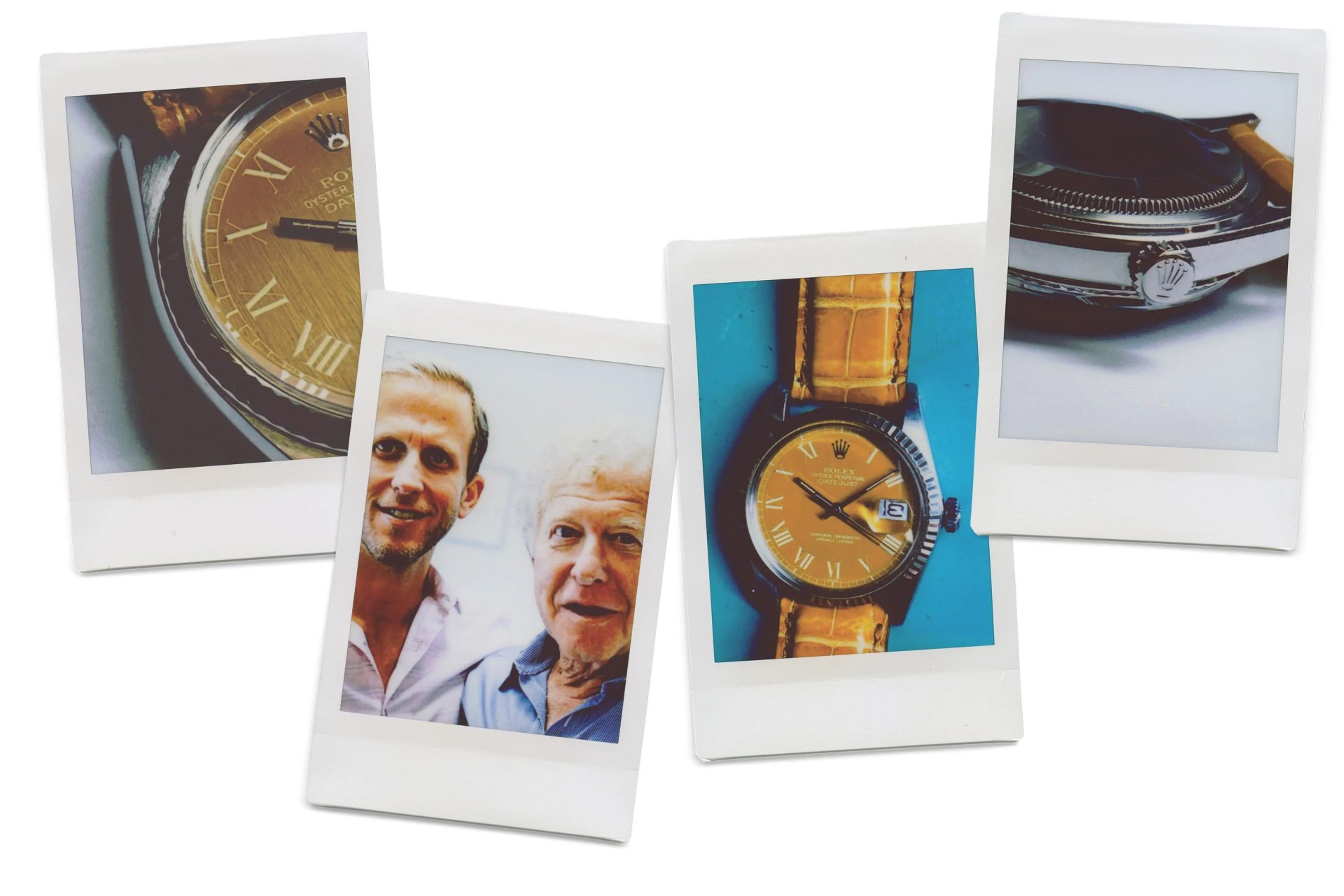 Photos by Steve Kivel
Photos by Steve KivelThe Watch: Rolex Datejust with Perch Buckley Dial
“My cousin used to go find watches, then sell them in the store. He brings this watch in, and I absolutely love it. It’s a Rolex Datejust with what’s called a Perch Buckley dial, with almost a wood grain to it. It’s a gem. I say to my cousin and my dad, who still runs the store, that I want to buy it. He said, “No, I want to make money, I want to sell it.” My dad couldn’t give a shit. He sells it to this really good customer. For twenty years, this customer comes back to the store a few times a year, and when he does, it’s like he’s torturing me with this watch. Year in and year out, I’m always asking him about this watch. He says it’s doing good.
“He pulls out the first, then the second, and then the third — and it’s the Rolex Datejust with the Perch Buckley dial. I bought it back from him. I’m like, I’m never letting this thing out of my sight ever again.”
– Steve Kivel
About a year and a half ago, this same customer comes into the store and says he has three watches to sell me. He pulls out the first, then the second, and then the third — and it’s the Rolex Datejust with the Perch Buckley dial. I bought it back from him. I’m like, I’m never letting this thing out of my sight ever again.
When I first started in this business in the early nineties, I didn’t have an appreciation for the collection end of watches. I wanted a Rolex, just like everybody else. And I had many, and a lot of times I’d sell them off my wrist and buy something else. It wasn’t till this watch came in that I really fell in love with a watch.”
Crispin Jones
Director, Mr Jones Watches
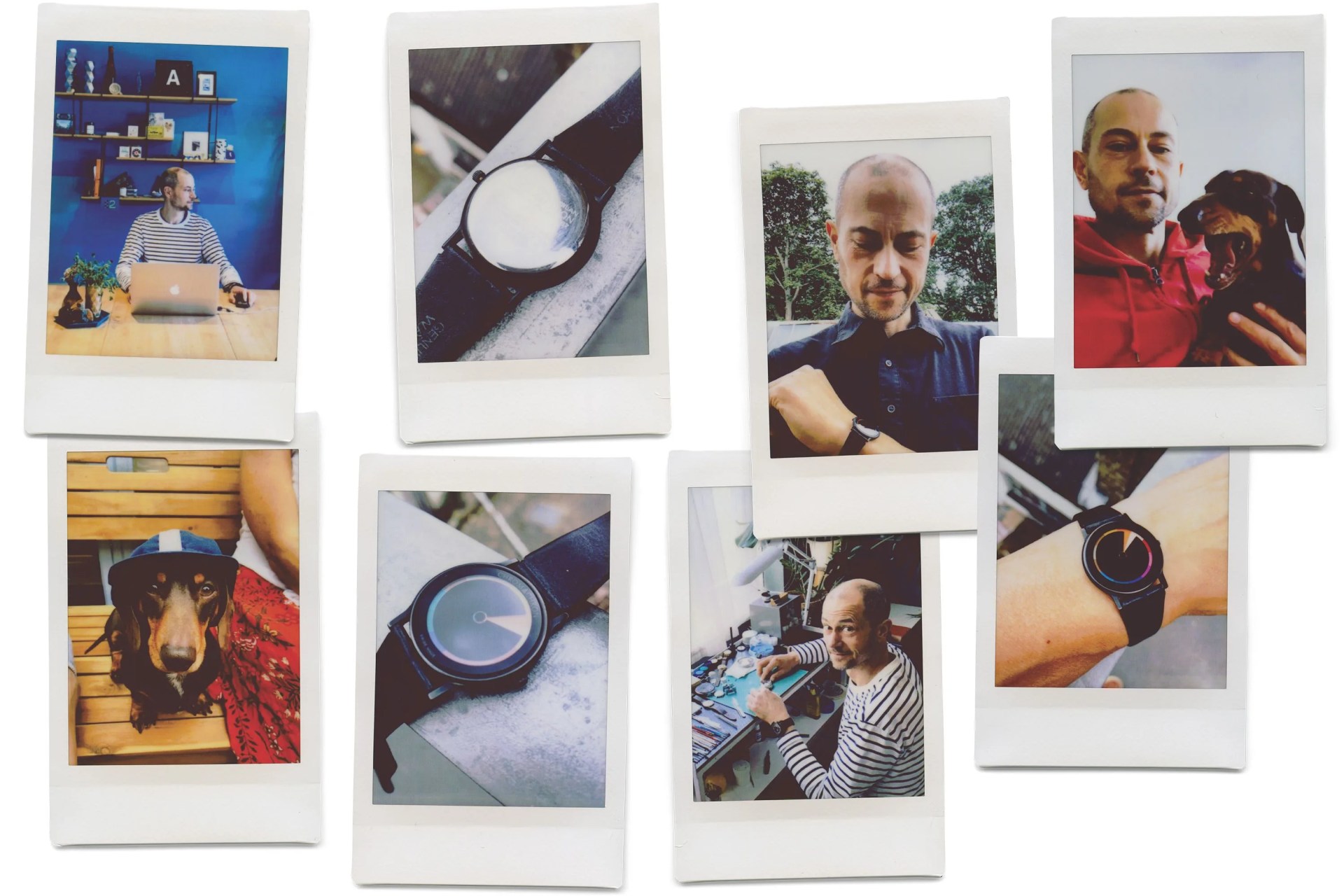 Photos by Crispin Jones
Photos by Crispin JonesThe Watch: Rolex Chromachron
“It’s not the first watch that I ever owned. It’s the first watch that ever made me think watches could be interesting. I bought it on eBay in the early two thousands. It’s called a Chromachron — [a portmanteau of] Greek for color and timekeeping. Visually, it’s striking and unusual, with a Pacman-shaped disk hand you read the hour through. Its designer, the German artist Tian Harlan, designed it with a philosophy in mind. Other watches make you a slave to hours, minutes and seconds; this watch tells a more natural rhythm of the day. It’s the watch that gives you time.
I don’t think Mr Jones is directly influenced by Harlan. It’s just that watch history is so conservative. Most watch brands are happy to make something that’s a bit like a Rolex from the 1960s. Design cues are established clichés. I’m not dismissing the approach; it’s challenging, and people work hard on them. But what was important for me about the Chromachron was that it made no references to previous watches at all. Harlan was an artist and architect, who designed a watch because that was what interested him.”
Barbara Palumbo
Writer, Speaker, Podcaster
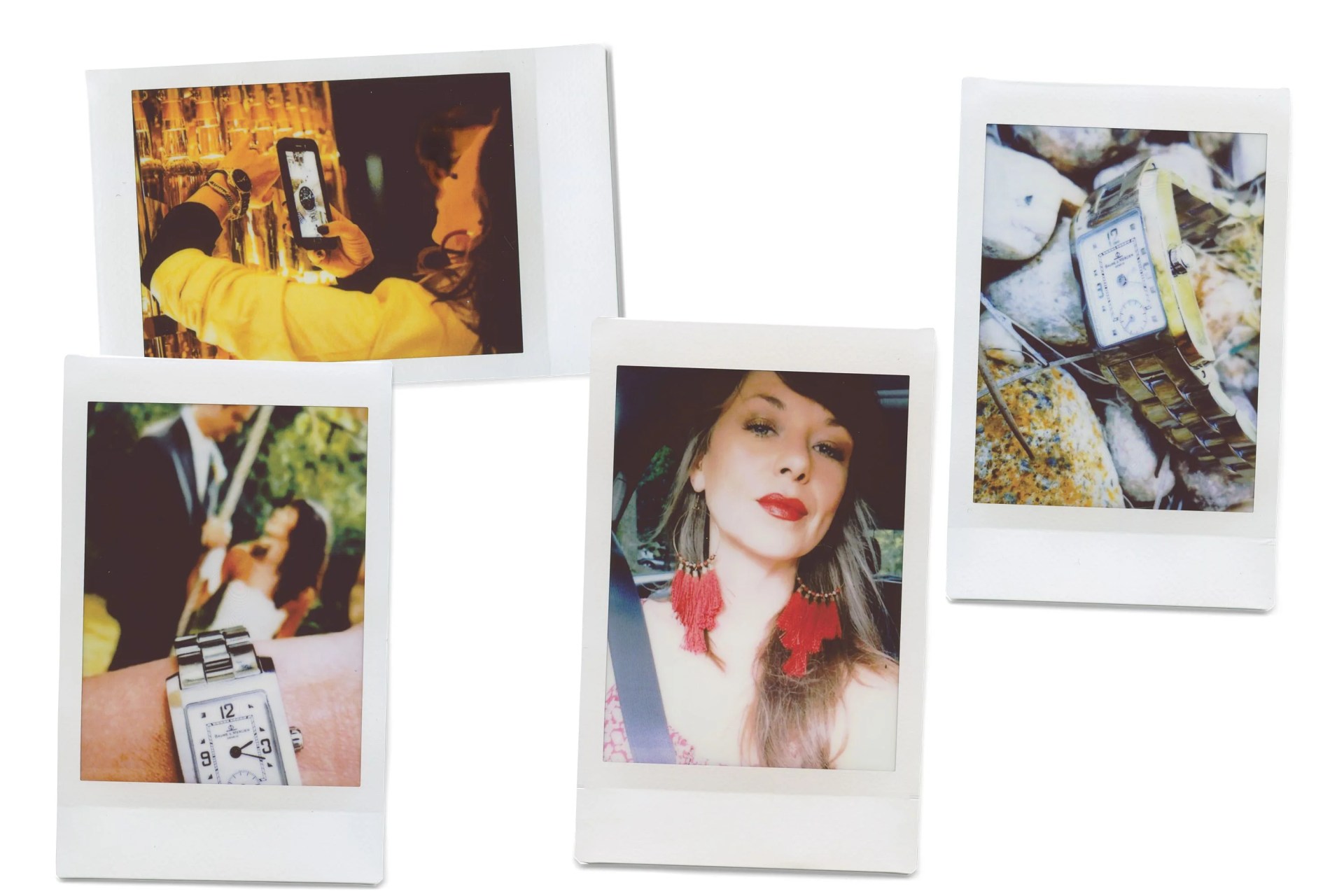 Photos by Barbara Palumbo
Photos by Barbara PalumboThe Watch: Baume & Mercier Hampton
“I got married at twenty-six. As a wedding gift, I received a watch from my [now] ex-husband, a Baume & Mercier Hampton in stainless steel. Engraved on the back, something super cheesy — “for time and all eternity.” It was my only watch and I loved it. Wore it every day, never took it off.
[After] about two years, we mutually decided to get divorced. Then I went on a game show called The Weakest Link. They flew me to L.A., and I made it to the end, went up against one guy [and] beat him. And then about five months after the show, he and I started dating long distance. This was just post-9/11 and airport security was insane. They made me take my watch off and I left it in a bin. I lost it. I was sick about it. Even though it had been given to me by my ex-husband.
“I thought, You know what, I loved that watch so much, I’m going to buy a new one.”
– Barbara Plumbo
Flash forward a few months. I found out that my ex-husband had bought a Harley. I thought, You know what, I loved that watch so much, I’m going to buy a new one. I went out and got the same model. I always felt really good about it because the new one doesn’t have any engraving on the back. Losing it, and buying the other one, kind of felt like the universe’s way of saying to me, That was your old life, here’s your new life.“
BILL YAO
Founder, MKII watches
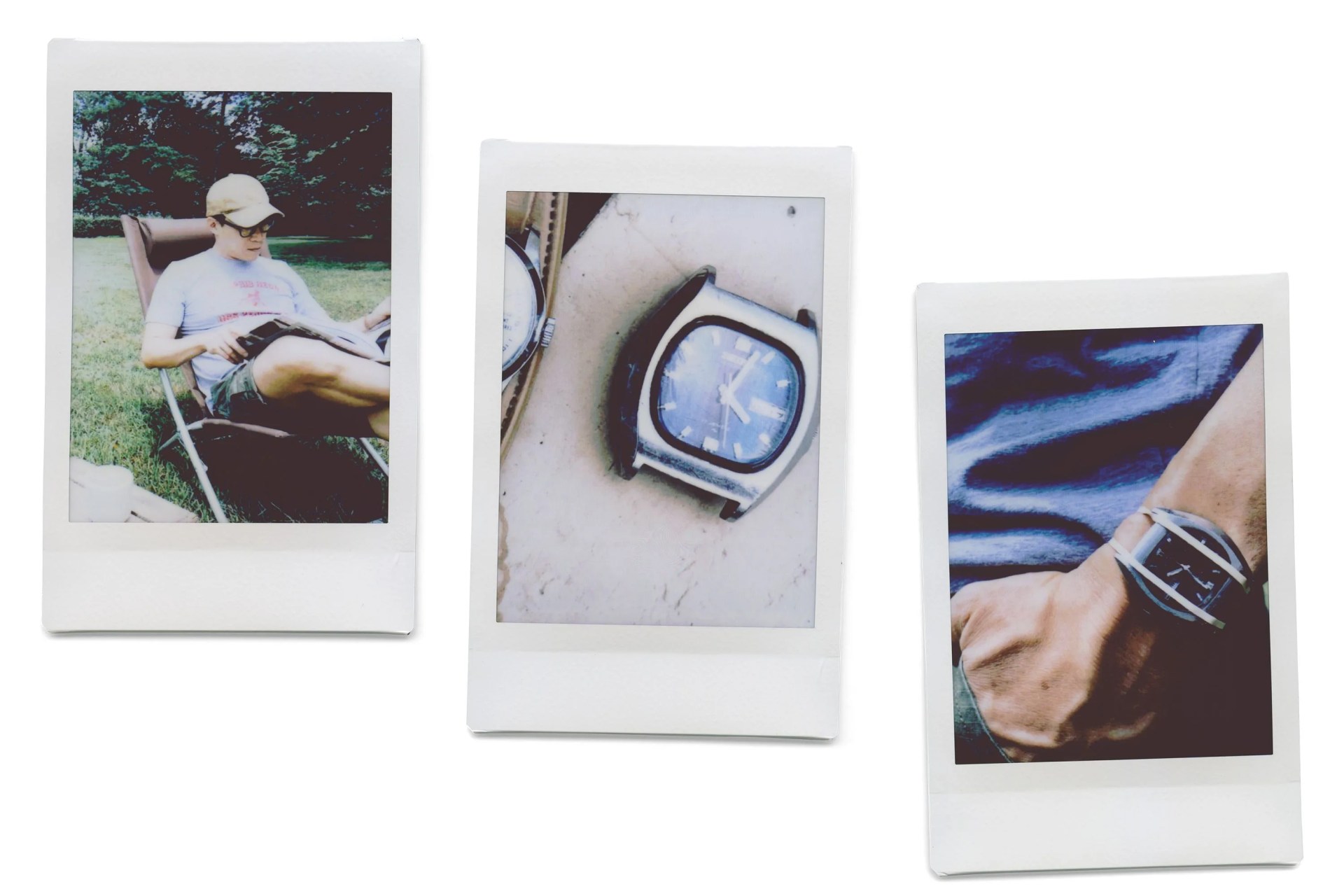 Photos by Bill Yao
Photos by Bill YaoThe Watch: Seiko Automatic
“This memory has always stuck with me: my dad, getting ready for work at his desk job, wearing this Seiko, rocking his wrist back and forth. He was winding it because it had stopped overnight. But I didn’t know that, and I think the memory stuck with me because I couldn’t figure out how the wrist-rocking and the watch keeping time were related to each other. When I first bought a mechanical watch, it was an Omega Seamaster. The store had wound the watch when I left. Thirty-six hours later, it stopped running. I freaked out and called the store, “What the hell is wrong with this thing?” I still didn’t understand.
I have a tendency to fixate on things I don’t understand. It grows from there. Sometimes it grows into the obsession it is today.”
MY “FIRST” WATCH
Story Author Chris Wright
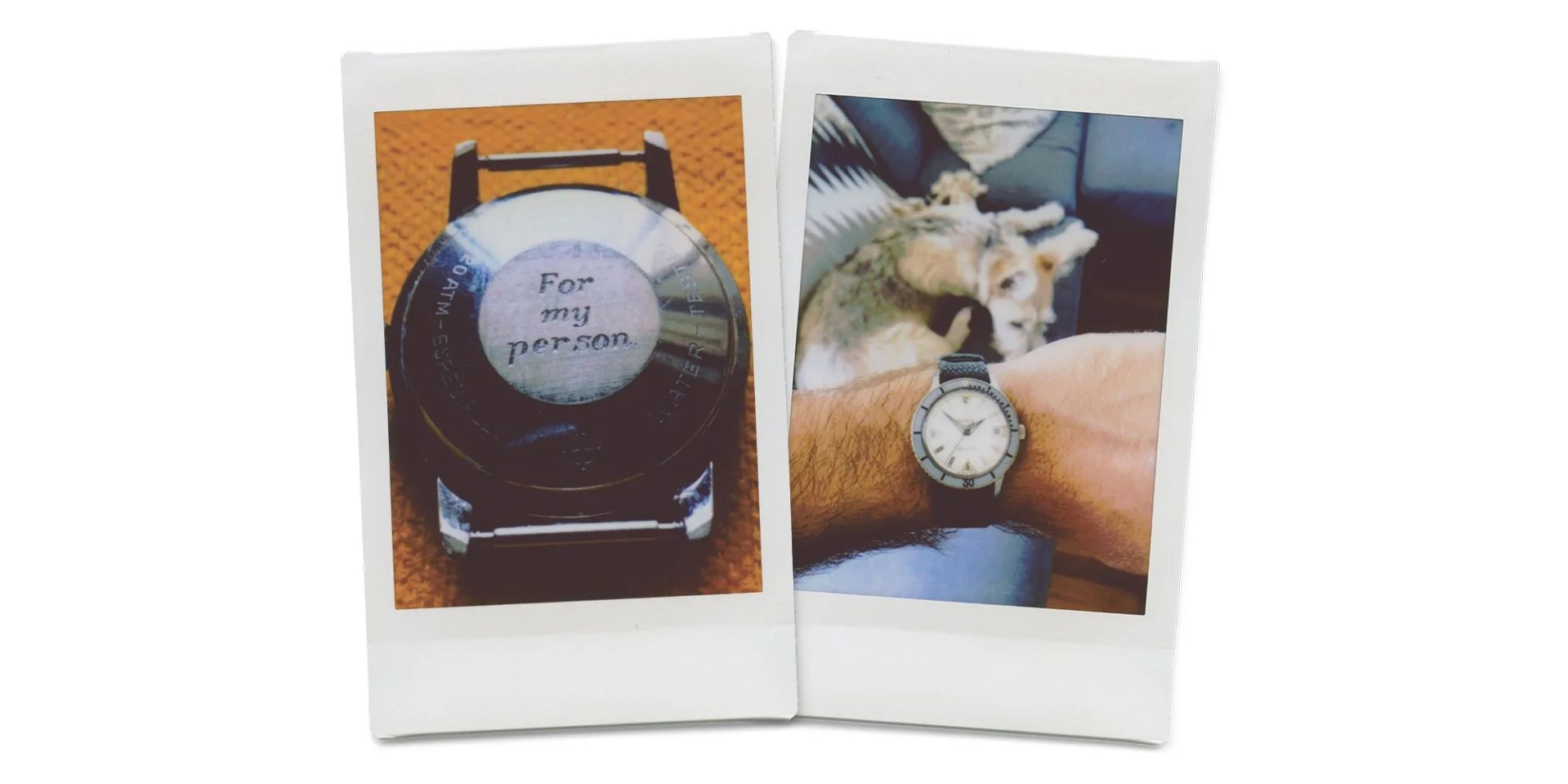 Photos by Chris Wright
Photos by Chris WrightThe Watch: Vintage Zodiac Sea Wolf
“My first watch was a vintage Zodiac Sea Wolf — baby-blue bakelite bezel, sword hans, silvery 35.5-centimeter dial that shines like a polished silver dollar on my wrist. To clarify: this was not my actual first watch. Before it I had a Seiko, a Chinese chronograph and an Indian military HMT Jawan with a badly printed fake dial and a Frankenstein movement rusting inside. But when people ask about my first watch, those aren’t the ones I tell them about. I tell them about the weird little Zodiac beauty and the inscription from my gal on the back. I tell them about how I rub it for good luck on takeoffs and how I always picture it in mental postcards from the places I’ve traveled.”
